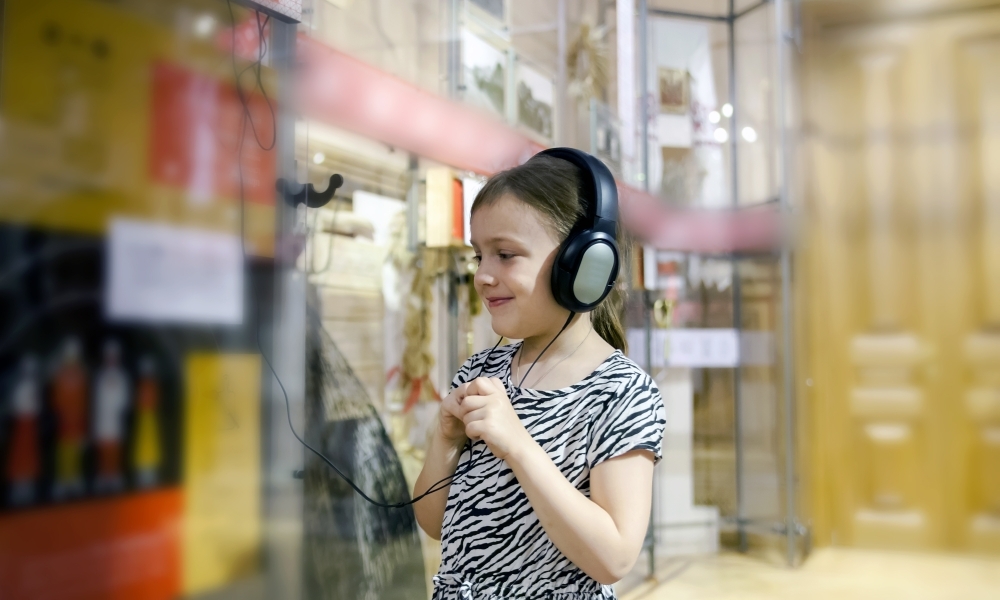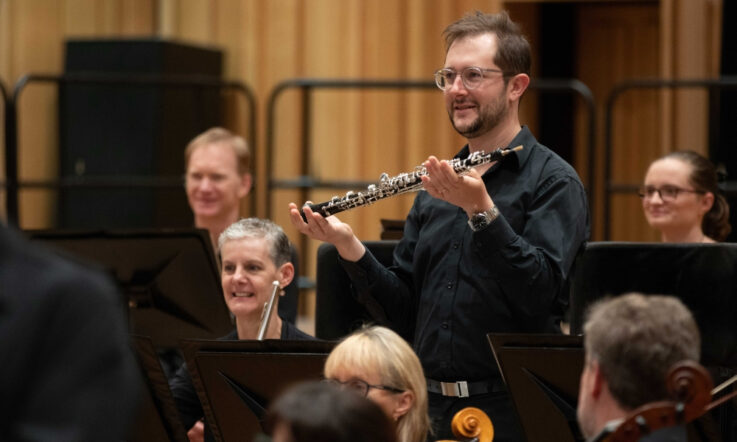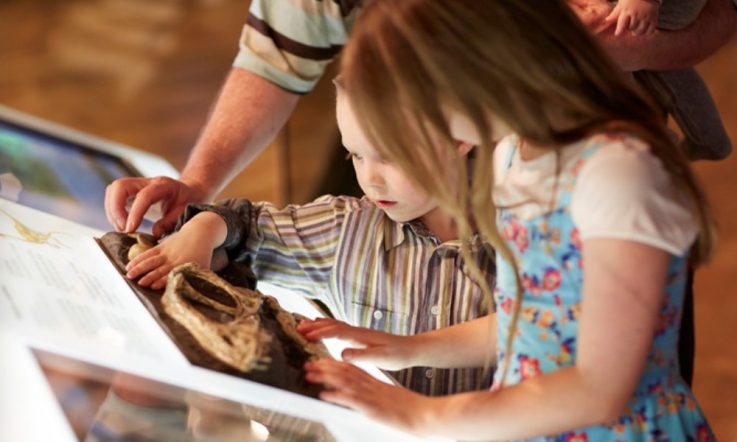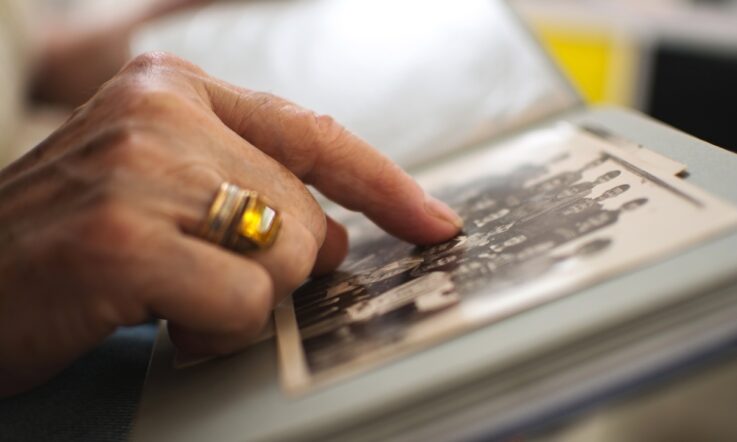Museums are places of discovery and amazement for most children, as at the museum they encounter the wonders and stories of the past as tangible objects. A visit to the museum connects abstract concepts with real-world examples (Elswick & Delavega, 2020).
Museum learning can increase student interest and motivation, self-efficacy, critical thinking, problem-solving, and literacy abilities (Heidt et al., 2013).
Long gone is the traditional view of a museum as being static and dusty. Contemporary museums promote interactive exhibits, experiential learning experiences and technological ‘open’ accessibility.
Museums and galleries provide extensive access to their exhibits and pair these exhibits with conceptual collections aligned with historically significant events, socio-cultural interests, and ideological and philosophical debates (Thogersen, 2019).
Through accessing a museum’s content and resources, students can analyse and evaluate a narrative or perspective through multiple contextual lenses (Heidt et al., 2013). Linda Daniela (2020) highlighted that virtual solutions for exhibiting museum collections are no longer a novelty but using museum collections remotely for learning purposes is relatively new in the educational environment.
Criteria to evaluate museum education and plan the most appropriate learning strategies includes (i) Technical performance; (ii) information architecture; and (iii) educational value (Daniela, 2020).
Integrating digital content
Since 2020, a school excursion to a museum has been restricted due to the pandemic. These restrictions have required virtual teaching that integrates digital content accessible to students from home.
The pandemic conditions also highlighted the extent of teacher knowledge and skills to integrate technology, pedagogy, and content knowledge (TPACK) (Phillips et al,, 2017) for a prolonged time within outreach programs. Equally, it exposed the inequities of student access to reliable and up-to-date technological equipment, Wi-Fi (dependability and bandwidth), and preparedness to engage in prolonged learning sessions within a virtual environment (Cohen, 2020).
Finding appropriate, engaging, and relevant digital resources that students can use independently has been paramount to teacher selection of learning content during this time. The source needs to be trusted and the learning experience styled for age appropriateness.
Choosing resources and planning a ‘visit’
Utilising museum education to support classroom teaching of topics, and independent student investigations, involves teachers becoming familiar with what the museum offers within their education services and resources. The museum experience should include pre- and post-activities/support, unique learning experiences consistent with the study topic, alignment of museum content with the current curriculum, and learning experiences that draw on students’ prior knowledge, and enhance knowledge and understanding through students’ natural curiosity, inquiry and excitement for learning new things (Sun et al., 2019).
The museum education program should also provide opportunities for students to critically consider the significance of the artefacts and collections under discussion and inspection. It is important that the teacher develops an ongoing relationship with the museum education staff to ensure that any learning content of the museum matches their expectations.
Object-based learning
Object-based learning (OBL) is the foundational theoretical approach to museum education (Freeman et al., 2014). Applying theories of experiential learning, OBL connects collections and classrooms, providing students with up close, hands-on, physical interactions with individual objects. Virtual OBL does not give students the opportunity study an object in-situ, but it does give students the opportunity to view the object close-up, and from various angles (if images of various angles are made available), or through a virtual tour (incorporating other significant images from its time of creation, or evidence of purpose) (Downey et al., 2007).
Museum teaching also adopts the visible thinking strategy (VTS), ‘See, Think, Wonder’ (Tishman & Palmer, 2005). Applying VTS, students construct a contextual understanding of the significance of the object or image.
Linking museum resources to the curriculum
An example of a museum education resource is from the Museum for Chinese-Australian History’s Digital Cultural Adventures (DCA), Ancient China workshop. The focus of the workshop introduces Year 7 students to various traditional Chinese technologies and inventions that are still used today or have influenced current technologies, and evidence of ancient Chinese burial customs that have become world reknown (for example, the Terracotta army).
The content of the workshop aligns with the Australian Curriculum History and HASS (Level 7), the cross-curriculum priority: Asia and Australia’s relationship with Asia, and the Intercultural Capability – society, culture and cultural identity, beliefs and practices, cultural diversity. The workshop is constructed to address the enquiry questions:
- How do we know about the ancient past?
- Why and where did the earliest societies develop?
- What emerged as the defining characteristics of ancient societies?
- What have been the legacies of ancient societies?
and specific Australian Curriculum content descriptions:
- How historians and archaeologists investigate history, including excavation and archival research (ACDSEH001)
- The range of sources that can be used in an historical investigation, including archaeological and written sources (ACDSEH029)
- The importance of conserving the remains of the ancient past, including the heritage of Aboriginal and Torres Strait Islander Peoples (ACDSEH148)
The ‘objects’ and ‘stories’ from the museum collection and visiting exhibitions are chosen to engage the learner with considering their social, cultural and historical significance, how they were used in the ancient societies, and how they have informed future societies, and the role of emperors, scholars and craftspeople in ancient societies. The learning experiences incorporate pre-, during-, and post-kinesthetic activities (including writing, working in a pair, questioning/recounting, physical activity) and multimodal components (for example, video clips, animations, online polling, and games) to keep the students engaged with the topic. This style of workshop is a ‘best practice’ model showing how museum education can support and supplement classroom teaching programs.
The benefits of OBL are that working with objects faciliates and reinforces learning (Poce, 2019; Romanek & Lynch, 2008). Without the opportunitiy to physically visit a museum, virtual incursions can provide unique experiences where trained guides direct students through various multimodal learning experiences using selective resources that support an inquiry-focused topic. Studying museum artefacts can assist students to gain understanding of structure-to-function relationships and enhance reflective practice that builds connections across future areas of learning.
References
Australian Curriculum, Assessment and Reporting Authority (ACARA). Australian Curriculum V8.4, Humanities and Social Sciences. https://www.australiancurriculum.edu.au/senior-secondary-curriculum/humanities-and-social-sciences/
Daniela, L. (2020). Virtual museums as learning agents. Sustainability, 12(7), 2698. https://doi.org/10.3390/su12072698
Downey, S., Delamatre, J., & Jones, J. (2007). Measuring the impact of museum-school programs: Findings and implications for practice. Journal of Museum Education, 32(2), 175-187. doi:10.1080/10598650.2007.11510567
Cohen, D. (2020) Contextual issues of technology integration in teacher practice. (Doctorate). RMIT.
Elswick, S., & Delavega, E. (2020). Museums as an Avenue for Enhancing Engagement and Educational Outcomes for Underserved Students. Research on Social Work Practice, 31(5), 520-528. https://doi.org/10.1177/1049731520936762
Freeman S., Eddy S.L., McDonough, M., Smith M. K., Okoroafor N., Jordt, H. & Wenderoth M. P (2014). Active learning increases student performance in science, engineering, and mathematics. Proceedings of the National Academy of Sciences, 111(23), 8410-8415. https://doi.org/10.1073/pnas.1319030111
Heidt M., Kanellopoulos K., Pfeiffer L., Rosenthal P. (2013) Diverse Ecologies – Interdisciplinary Development for Cultural Education. In: Kotzé P., Marsden G., Lindgaard G., Wesson J., Winckler M. (eds) Human-Computer Interaction – INTERACT 2013. INTERACT 2013. Lecture Notes in Computer Science, vol 8120. Springer. https://doi.org/10.1007/978-3-642-40498-6_43
Phillips, M., Koehler, M., Rosenberg, J., & Zunica, B. (2017, March). Unpacking TPACK: reconsidering knowledge and context in teacher practice. In Society for Information Technology & Teacher Education International Conference (pp. 2422-2429). Association for the Advancement of Computing in Education (AACE). https://www.learntechlib.org/primary/p/177538/
Poce, A. (2019). Object Based Learning in museum education. How to imagine a new inclusive heritage. img journal(1), 262-267.
Romanek, D., & Lynch, B. (2008). Touch and the Value of Object Handling: Final Conclusions for a New Sensory Museology. In H. J. Chatterjee (Ed.). Touch in Museums: Policy and Practice in Object Handling, Berg.
Sun, Z., Wang, K., & Li, Z. (2019). Construction of Educational Resources and Design of Learning Activities in Facilitating Museum Education. 2019 International Joint Conference on Information, Media and Engineering (IJCIME) (pp. 414-418). doi:10.1109/IJCIME49369.2019.00090
Thogersen, J. (2019). The Australian History Museum: A wealth of social history resources for object-based learning. Teaching History, 53(2), 12-15. https://search.informit.org/doi/10.3316/informit.525511393211601
Tishman, S., & Palmer, P. (2005). Visible thinking. Leadership compass, 2(4), 1-3. http://pzartfulthinking.org/wp-content/uploads/2015/04/VT_LeadershipCompass1.pdf (PDF, 132KB)
In this article, Dr Deb Cohen mentions some of the considerations for teachers when planning an experience, including alignment of content with the curriculum.
Think about a unit of work or topic you are teaching this year. How could you include an incursion or excursion into your planning? What factors will you consider when selecting education programs and resources?



